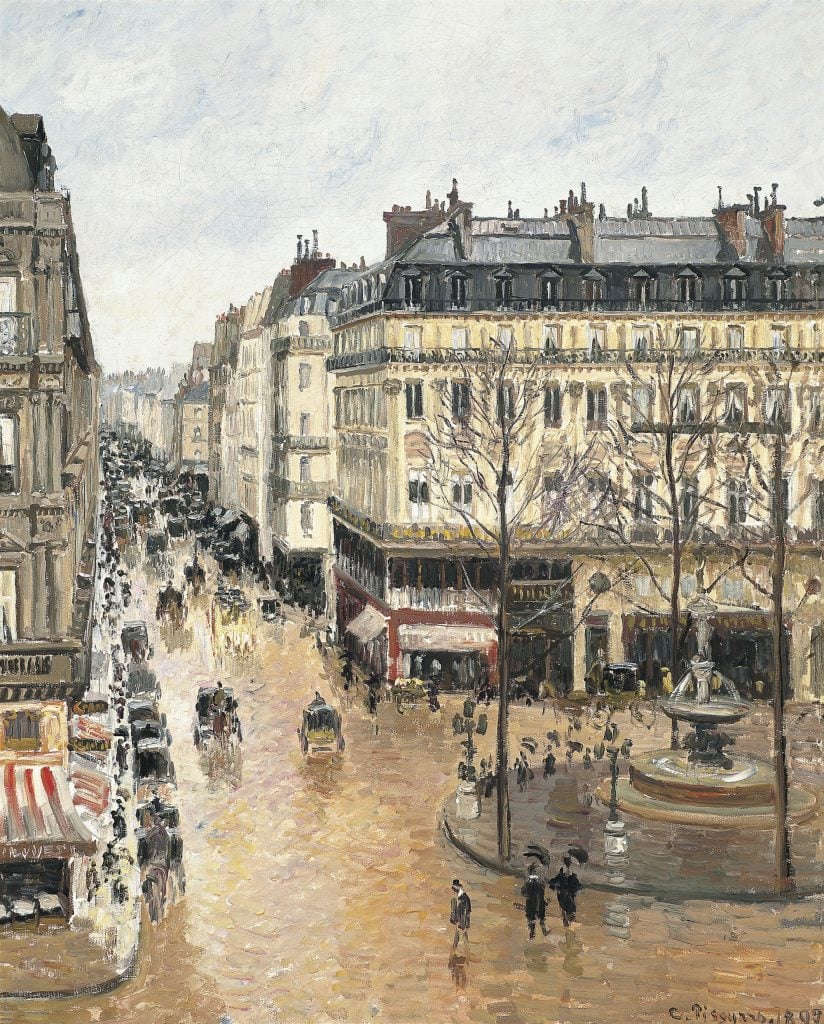Law & Politics
A Spanish Museum Can Keep a Nazi-Looted Camille Pissarro Painting Despite Family’s Objections, an Appeals Court Rules
The court lets the museum off the hook since it did not appear aware of the earlier theft.

The court lets the museum off the hook since it did not appear aware of the earlier theft.

Eileen Kinsella

A long-running and complex legal battle over a valuable Camille Pissarro painting stolen from its owners by Nazis on the eve of World War II may have at last reached its conclusion.
Yesterday, an appeals court in Pasadena, California, upheld a district court’s ruling in favor of Madrid’s Thyssen-Bornemisza Collection, which currently owns the painting, Rue Saint-Honoré in the Afternoon, Effect of Rain (1897).
There is no dispute that the painting was looted: The court acknowledge that Nazis took the painting from Lilly Cassirer, a Jewish woman, in 1939 as a trade for her family’s safe passage out of Germany. By the 1950s, believing the painting was unrecoverable, the family accepted financial restitution from an Allied forces tribunal following the war.
Unbeknownst to the family, the painting was eventually purchased in 1976 from the Hahn Gallery in New York by renowned collector Baron Hans-Heinrich Thyssen-Bornemisza. His collection was eventually acquired by the kingdom of Spain in 1993 and housed in a state museum as the Thyssen-Bornemisza Collection.
In 2000, when Lilly’s grandson Claude spotted the painting hanging at the museum, he sued in US federal court to retrieve the work. A string of court cases ensued, including in both Spain and California, and, after Claude’s death, were taken up by other Cassirer heirs.

The Camille Pissarro painting hanging in the Berlin apartment of Lilly Cassirer (ca. 1930). Photo courtesy of David Cassirer.
Most recently, in 2019, the family argued in a California court that museum experts failed to fully examine the painting and its provenance to establish a clear title. But a judge denied those claims, finding that the museum’s actions did not constitute “willful blindness” when the work became part of its collection.
Now, the appeals court has agreed. It concluded that, “after a full trial on the merits, the [Thyssen-Bornemisza Collection] is the owner of the painting. The painting will remain on public display at the foundation, as it has since 1992,” according to a statement from the collection’s attorney, Thaddeus Stauber. “We are pleased with the appellate court’s unanimous confirmation of the foundation’s ownership of the Pissarro painting.”
The attorney for the Cassirer family did not immediately respond to request for comment.
The appeals court also supported the district court’s finding that Baron Thyssen-Bornemisza lacked “actual knowledge” of the theft, based in part on evidence that he purchased the painting for fair market value from a reputable art dealer and then went on to publicly exhibit it after the acquisition.
Despite what looks to be a blanket rejection of the Cassirers’ case, the appeals court looks to have previously taken a more sympathetic view, noting that in a prior appeal it had reversed the lower court’s decision in favor of the museum. And it considered questions about whether the museum was aware of the theft to be credible at that time. However, after a trial in which a district court determined that the museum rightly acquired title to the work, the appeals court ultimately agreed.